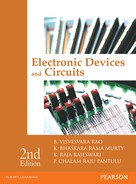General Introduction
The process of learning could be made as exciting and easy as it could be made boring and difficult. It becomes easy and exciting if it could be made to be felt as a game of fun. A game has participants, implements and rules. The game pales if the participants lack commitment. In the game of learning, the participants are the teachers and the taught. The implements are the classroom, laboratory, textbooks and the like. The rules are the implied principles in various subjects.
The requirement on the part of the student is to keep their eyes and ears open with intent to summarise. For instance, in a classroom the students note down some points not necessarily well connected. A few gaps will be there. The student after going home should “fill in” the blanks, by recalling from their memory, of what they had heard with the help of textbooks. If this is done, the day’s lesson gets consolidated. This requires at least six hours of work on the part of the student the very day. After one such reading the student may feel still aham na pandithaha (I am not a pundit). But a second reading makes them feel aham pandithaha (I am a pundit). A third reading boosts one to the level to proclaim aham eva pandithaha (I am alone a pundit). There is no substitute for hard work. It is the keynote for success.
Any game inevitably involves movement and forces. The game of electronics is no exception. The nature of the object decides the nature of force. Physical objects need physical forces. Since electrons are negatively charged particles, to play with them we need discrete positive and negative potentials for their movement and their push–pull action on electrons results in current.
Unless there is use, no one attempts anything, including learning. The subject of electronics is not a drab desert of sand dunes but contains oases in the form of innumerable electronic gadgets. At present, electronics so pervades the gadget world that it has become an integral part of the whole universe of science and technology. The telephone is no more a luxury article nor is it a status symbol: it has become an absolute necessity in today’s world. The progress in communication had been phenomenal and especially during the last decade, the world has seen some real wonders; the cell phone in wireless local loop capable of mobile communication globally is just one case in point.
In the present scenario, the marriage between computers (essentially electronic hardware) and communication (electronic principles) has made hitherto unthinkable concepts practically realisable. Any two points—poles apart literally—are only a few microseconds away. The sky is the limit, and the wildest imagination can be realised, if not immediately then at least in the near future. This leads to global unification through communication links controlled by electronics.
Electronics has become an inevitable link in learning and spreading knowledge. The recent advances in microelectronics, computers and communication allow engendering of new technologies like Internet communication technologies (ICT) for e-commerce, e-governance, e-seva, e-banking…You name it, we show the e-presence.
The buzzwords of the present-wave generation are knowledge, power, manpower and the power of electronics. The latest inventions in microcomputers and microcontrollers have revolutionized the process control instrumentation, embedded systems, and all emerging fields like DSP, spintronics, optical fibre cable communication and recent concepts of information, computers and entertainment (ICE), and distance and continuing education through video conferencing. Lasers and microrobots rule the roost in microsurgery, and, with communication links, the most famous surgeon in Harley Street will be able to control an operation in a remote Indian village. Even today, it is possible to control all home appliances from anywhere in the globe through a cell phone and embedded systems.
For an engineer or scientist, the knowledge of electronics is essential. In engineering, one deals with various aspects of electronics, and judicious use is impossible without adequate knowledge of the subject at the basic level. As far as the students are concerned, gone are the days when employers used to chase them. Now the employers choose on merit and capacity. The sooner the students realise this stark fact, the better will be their attention to studies.
In this context, some helpful truths are quoted:
- Never it is too late (Einstein was considered dull dud in his childhood).
- Bury the past (No hangover of past failures and disappointments).
- Hope in the future (One can create their own future).
- Develop faith and determination to excel by the day.
- Believe in commitment and hard work.
- Sky is the limit for realisation.
Expression is through language. Since English is the medium of instruction, the first step is to develop interest in it by reading and applying. CALL (computer-aided language learning) software is also available for development of language skills.
Mathematics is the mother of science, and hence of engineering and technology—since they, in one way or the other, are applied sciences. Mathematics allows abstract ideas to be expressed by mathematical modelling, making possible ultimate physical realization. Mastery over mathematics makes the other subjects easy—almost a cakewalk.
Every new subject in the curriculum progressively depends on the subjects taught earlier and becomes an extension or combination of a few previous ones. Thus the present new subject paves the way for future newer subjects. Sooner the student appreciates this value of interrelation better will be the ease with which they can embrace a subject. This will develop a feeling of equanimity towards all subjects.
